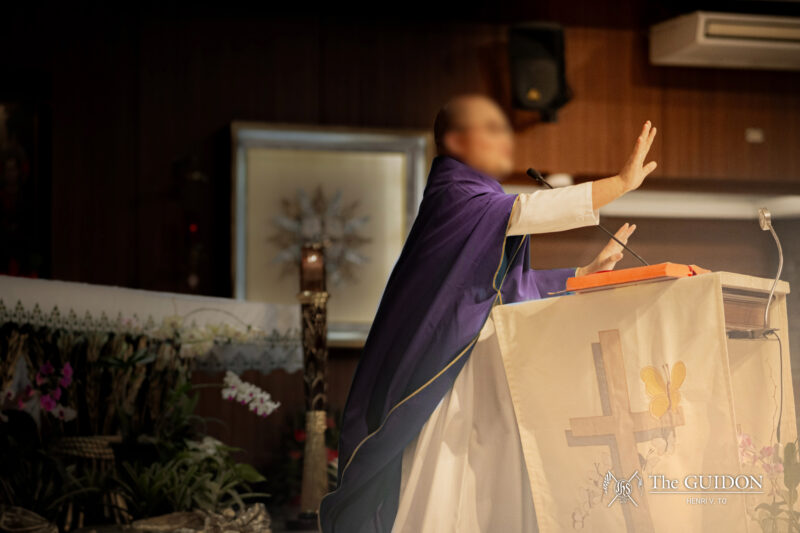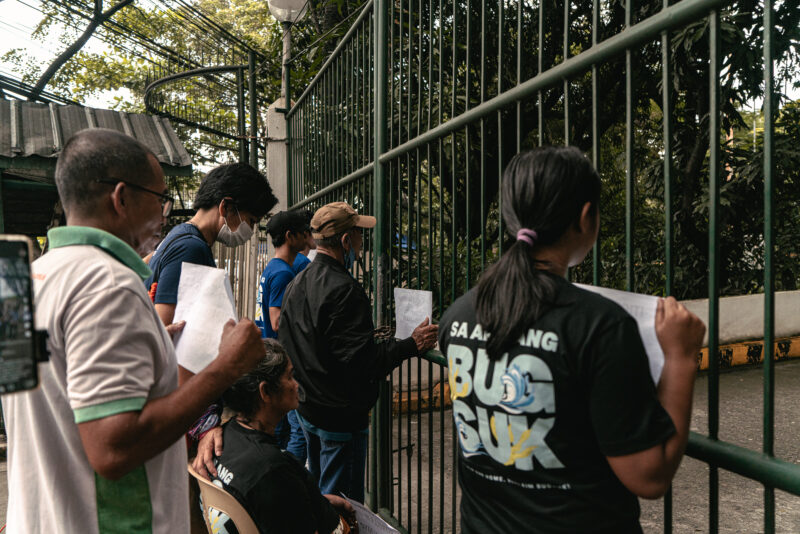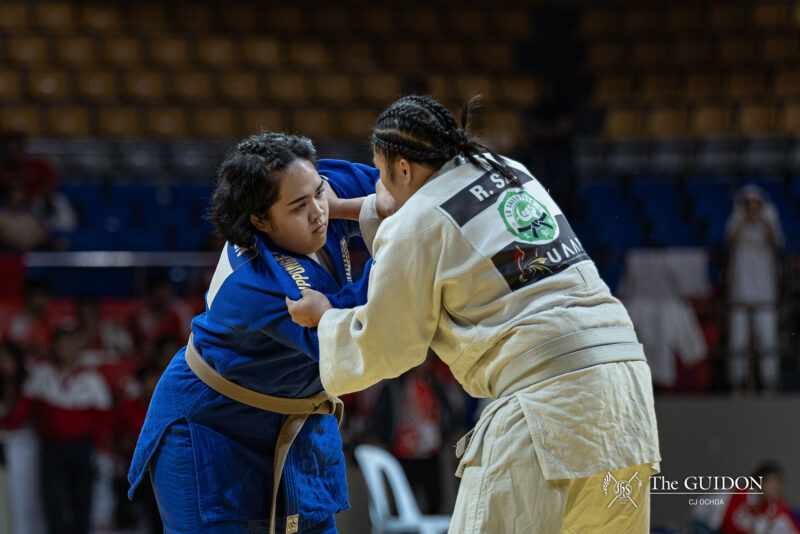
DEFYING GRAVITY. Leaping from buildings is no big deal for traceurs, or parkour practitioners. Photo by Ryan Y. Racca
It’s been said that people have long since lost touch with nature, but there’s something so attuned to it in the way people move this afternoon. As we rest our shaky legs, hearts racing, we watch a fellow student pause. Then, with a running start, he jumps across a walkway, leaps onto the thick limb of a tree, strides from branch to branch, and lands lightly on the ground.
It seems impossible, but a group of Ateneans begs to differ. They are practitioners of parkour, a discipline that focuses on efficiency coupled with creative movement.
Parkour is often viewed as an extreme sport that requires a daredevil streak, but it isn’t just a risky form of exercise. Its movement goes beyond the physical in a way that is much closer to home. In fact, it’s happening right on campus.
Building momentum
We met at the batibot tree at 4:30 in the afternoon with all seven of us dressed in comfortable clothing and rubber shoes. Trekking to a grassy area near the covered courts, we started stretching unfamiliar muscles, hopping from foot to foot. “Low and slow,” the traceurs, or parkour practitioners, reminded us with grins. However, as we learned to jump, practically hugging our legs to our chests as we leaped off the ground, we realized one thing: catching up to traceurs is easier said than done.
In 2004, a group of Ateneans sought a place to learn and do parkour. Unable to find any Pinoy traceurs, they took matters into their own hands. Interdisciplinary studies ‘07 alumnus Ira Villar became co-founder of Parkour Philippines (PKPH), the country’s first parkour organization, and online, he and his friends learned about parkour’s philosophy from foreign traceurs. “[We] wanted to ensure that [we would show] the original spirit of parkour,” Villar says. “It’s not [about] stunts. It’s not a competition. It’s a discipline.”
Since PKPH was founded in 2004, its members have been stunt doubles in shows such as the fantaserye Kamandag, as well as consultants at launches for Smart, Nokia, Intel, and Kawasaki. They even lectured on parkour’s health benefits at the Ateneo School of Medicine and Public Health. However, returning parkour to its roots has just begun with Enzo Yabut, a member of PKPH’s core group who aims to revive parkour through Parkour Ateneo (PKA). With on-campus training on Mondays and Thursdays, his small group of traceurs has the greenery and concrete at its disposal.
Breaking down walls
Parkour calls to mind dangerous situations, but training with PKA revealed the opposite. We began with simple motions, following their philosophy of starting “low and slow.”
Our first attempts at jumps and quadrupedal movement were clumsy. Later, they were still a far cry from the practiced traceurs’ fluid movements. Though parkour requires time to master, the techniques are artful and practical; the jumps reduce landing impact, while quadrupedal movement allows one to balance on rails. “Parkour is all about fast, safe and efficient movement,” says Yabut. “We don’t just jump into it.”
Parkour is a discipline anyone can do with enough practice. Rather than focusing on daring stunts, it values reclaiming the body’s full capability and creatively exploring everyday settings in new ways. Who says that buildings and concrete are dead when traceurs make them dynamic and alive?
The concept of flow is key. “Flow is instinctual movement. [There’s] no hesitation, [just] complete focus,” says Yabut. Adapting naturally and freely to surroundings allows traceurs to take control of their motion.
We watched as traceurs lifted themselves on top of hurdles nearly a storey tall. “It’s only you and the obstacle,” says Yabut. Each movement serves as a challenge for the self. As freshman Chad Yee explains, “No one else will tell you [that] you can’t do it more convincingly than your own mind.”
Freedom fighters
Inhaling deeply, we concentrated on the rail a few feet ahead of us. “Just get over it! This is an ex-boyfriend!” Yee coached us. We ran forward, and without thinking, we were vaulting over it, our feet landing firmly on the other side. Did we just do that? That must be the freedom traceurs love about parkour.
But not all readily accept the liberty it promotes. Closed-mindedness has kept parkour from getting off its feet, with onlookers quick to judge traceurs for what they do. One berated them for doing vaults over a handrail on campus, stressing, “It’s a handrail—it’s only used for hands!”
However, Villar says, “People could say that we’re disrespecting the environment. [I say,] Do you see the potential in [it]?”
While parkour allows people to fully utilize their surroundings, it may be seen as deviant behavior. “It [comes] back to the way we are disciplined,” Sociology and Anthropology Department faculty member Issa Mijares says. “There are expectations in society of how you should conduct yourself. [Climbing walls] is not the norm.” Parkour also challenges socially imposed limitations, freeing participants from being restricted by what has been taught. “Parkour isn’t a set of techniques. It’s a way of thinking, a form of expression, and a state of mind,” says Yabut.
Perhaps one of parkour’s greatest strengths is that many have yet to discover it. To new eyes, it can be seen not as an extreme sport but as the discipline it strives to be. Awareness is key, which makes them ponder accreditation as an org. “We’ll see,” says Yabut. “We’re not really in a hurry. Low and slow.”
Forward movement
Training left us with battle scars and sore muscles, but these came with the fulfillment from doing more than we thought we could. As we experienced firsthand, parkour is living motion, an expression of freedom and a statement about contesting social norms.
Parkour merges several dualities: the intangible and the concrete, the body and the mind, art and the everyday, even careful control and candid freedom. It’s dizzying to imagine how traceurs try to resolve these, but perhaps the point is in keeping them unresolved. Taking a cue from parkour, rethinking these delineations requires an open mind and a propensity for moving forward.
- Photo by Ryan Y. Racca.
- DEFYING GRAVITY. Leaping from buildings is no big deal for traceurs, or parkour practitioners. Photo by Ryan Y. Racca
- Photo by Ryan Y. Racca.









